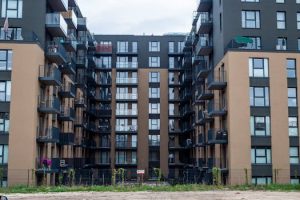Universal Design: Creating Homes for All Ages and Abilities
Have you ever walked into a home and felt like it was designed specifically for you? It’s a feeling of comfort and ease, like every corner and detail was planned with your needs in mind. This is the beauty of Universal Design, a concept that has gained popularity in recent years. Universal Design is all about creating spaces that are accessible and convenient for people of all ages and abilities. In this article, we will explore the principles of Universal Design and how it can be applied to create homes that are welcoming and functional for everyone.
The Principles of Universal Design
Universal Design was first developed by Ronald L. Mace, a renowned architect and a wheelchair user himself. He coined the term in the 1980s and described it as “the design of products and environments to be usable by all people, to the greatest extent possible, without the need for adaptation or specialized design.”
The core principles of Universal Design are flexibility, simplicity, and inclusivity. Let’s take a closer look at these principles and how they can be incorporated into home design.
Flexibility
In Universal Design, flexibility refers to designing spaces that can be used by people of various ages, sizes, and abilities. For example, a home with wider doorways and hallways can accommodate not only wheelchair users but also parents with strollers and people carrying large items. Another example is using lever-style door handles instead of traditional knobs, which are easier for people with limited hand mobility to operate.
Flexibility can also be achieved through adjustable features such as height-adjustable countertops and shelves. This allows people of different heights to comfortably use the same space without any modifications.
Simplicity
The principle of simplicity in Universal Design focuses on creating spaces that are easy to understand and use. This means avoiding complex layouts and design elements that may be confusing or overwhelming for some people. For instance, using easy-to-grasp buttons or switches instead of complicated controls for lighting or heating systems.
Simplicity can also be applied to the overall aesthetic of the home. Choosing a neutral color scheme and minimizing clutter can create a calm and uncluttered environment that is easier to navigate for people with visual or cognitive impairments.
Inclusivity
Inclusive design aims to create spaces that cater to the needs of all individuals, regardless of their physical or cognitive abilities. This can be achieved by considering a wide range of users during the design process and incorporating features that benefit everyone. For instance, installing grab bars in bathrooms not only helps older adults but also people recovering from injuries and pregnant women.
Another aspect of inclusivity is creating a home that is welcoming and comfortable for guests and visitors with disabilities. This can include having a level entrance, wider doorways, and accessible bathrooms.
Applying Universal Design in Home Design
Now that we have a better understanding of the principles of Universal Design, let’s explore how they can be applied to create homes that are truly inclusive.
Entrance and Circulation
The first step in creating an accessible home is to ensure that the entrance is level and has no steps. This makes it easier for wheelchair users and people with mobility impairments to enter the home. Wider hallways and doorways also allow for easy navigation and can accommodate assistive devices such as walkers and wheelchairs.
It’s also essential to have an open floor plan that allows for easy movement between different areas of the home. This not only improves accessibility but also creates a sense of spaciousness and versatility.
Kitchen and Bathrooms
Kitchens and bathrooms are two areas where Universal Design can make a big difference in functionality and accessibility. Installing lower countertops and cabinets allows people who use wheelchairs to easily reach items without the need for modifications. Adding grab bars and non-slip surfaces in bathrooms can prevent accidents and provide support for older adults and people with disabilities.
It’s also crucial to choose fixtures and appliances that are easy to use and require minimal physical effort. For example, a touchless faucet in the kitchen and voice-activated lighting in the bathroom can make life easier for individuals with limited hand mobility.
Lighting and Color Contrast
Lighting is an essential aspect of Universal Design. Adequate lighting is necessary for people with visual impairments, while good color contrast can help those with certain types of color blindness. Installing LED lights with adjustable brightness and color temperature can cater to different needs and preferences.
Using high contrast colors on floors, doorways, and furniture can also help people with low vision navigate through the home more easily.
Conclusion
Incorporating Universal Design principles into home design not only improves accessibility but also creates spaces that are welcoming and functional for everyone. By embracing flexibility, simplicity, and inclusivity, we can create homes that cater to the needs of all individuals, regardless of their age or abilities. Let’s strive to create truly universal homes that bring comfort and convenience to all who enter.




